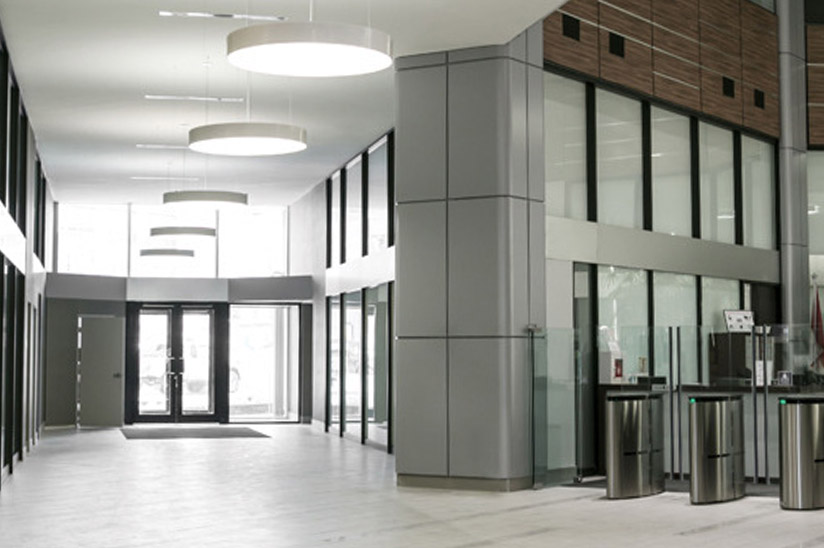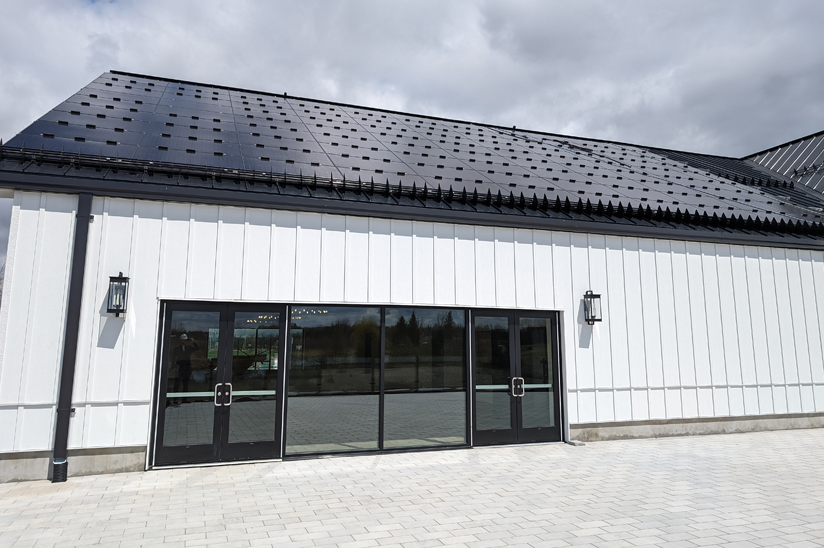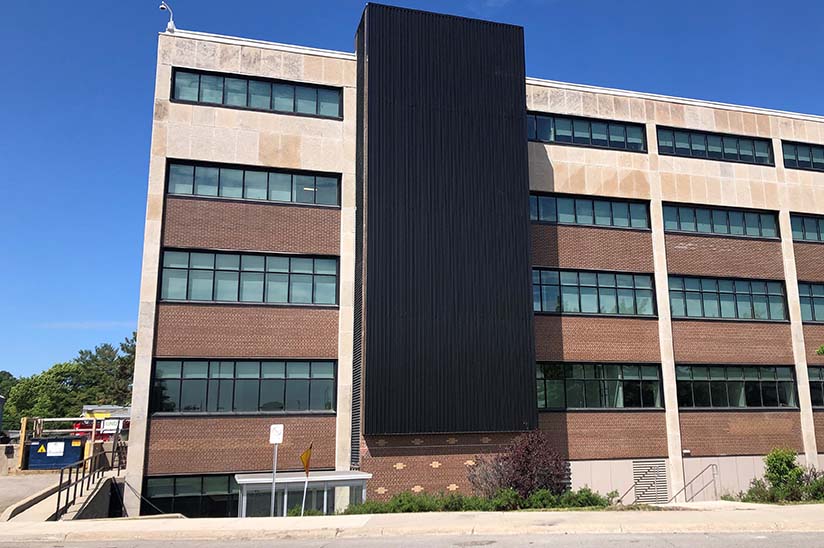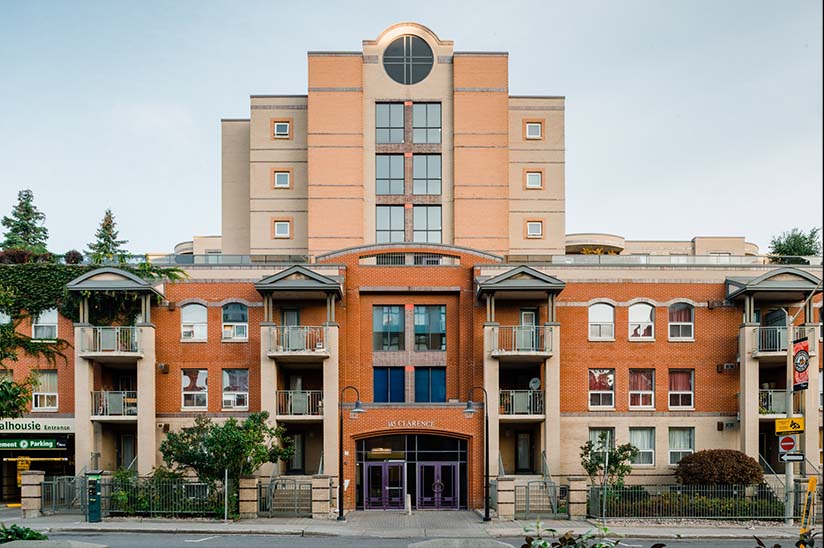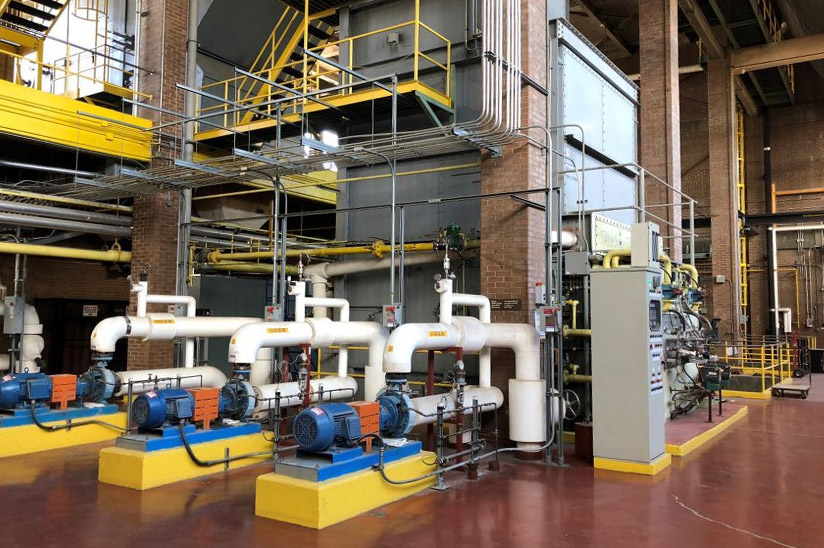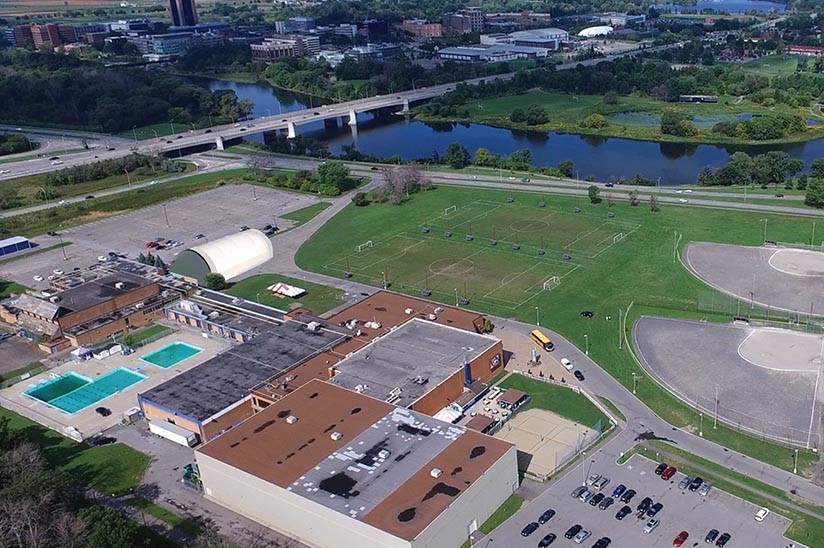Client: City of Waterloo
Location: Waterloo, Ontario
Size: 50,000 m2 (538,196 ft2)
JLR developed a low-carbon roadmap for the City of Waterloo (City) to demonstrate what is required to reduce their building’s greenhouse gas (GHG) emissions by at least 80%. The study used five representative buildings, with various functions, to form the core of the study: an office building (city hall), a fire station, a library, a twin-pad ice rink, and a multipurpose sportsplex. Overall, the buildings together included approximately 50,000 m2 of area.
The energy performance of each building was analyzed based on historical building data analysis, benchmarking, site visits, energy modelling, validation, consultation with the city staff, and our professional experience. JLR’s Innovative Energy Market group developed several retrofit packages for each building which included items such as: envelope upgrades (window, wall, skylight); smart control procedures; economizers; energy recovery ventilators; LED lighting; boiler and hot water tank upgrade; heat recovery from the refrigeration cycle of the ice rinks for hot water and space heating; heat recovery from data centre; air-source heat pumps; geothermal ground-source heat pumps; water-source heat pumps; and solar photovoltaic (PV). Each of these measures was implemented iteratively within building energy models sequentially and presented as a waterfall style graphic of GHG and energy reduction per element. Once energy retrofit packages were developed, they were compared based on the total energy and GHG emission reductions as well as their associated implementation costs and savings.
JLR’s proprietary lifecycle costing analysis (LCCA) tool was used to compare different scenarios against the baseline. This tool allows for separate entry of the current values and future (50 years) changes of fuel costs, carbon costs, grid carbon emissions, and different escalation rates.
The study demonstrated pathways for each of the buildings analyzed to achieve more than 80% reduction in GHG emissions. In addition, it was demonstrated that they can benefit from more than 50% of energy consumption reduction that will help with the business case of such projects.


